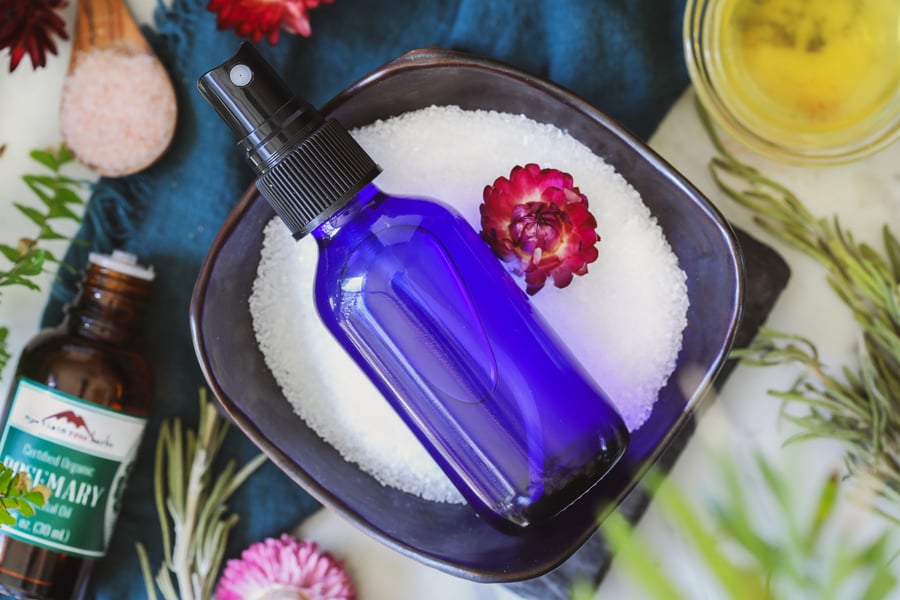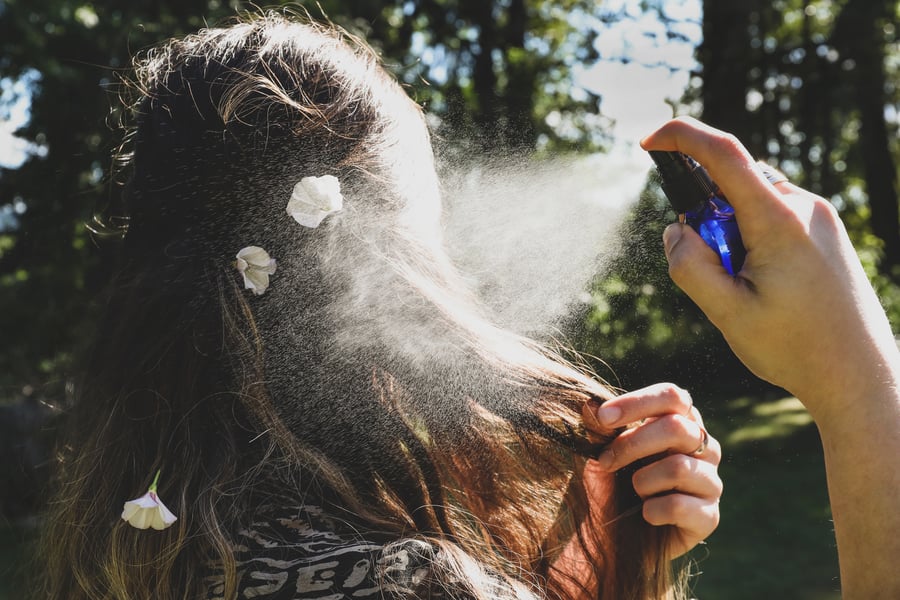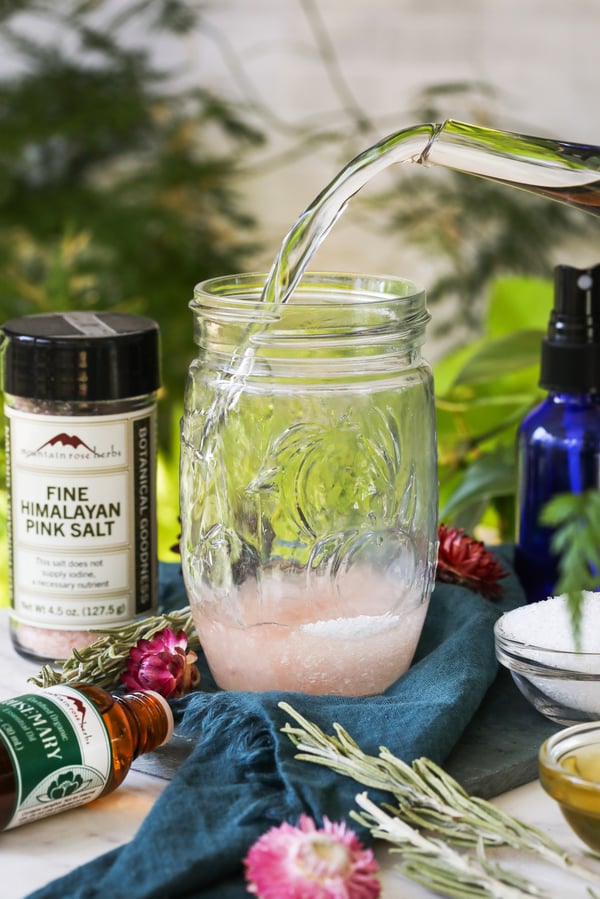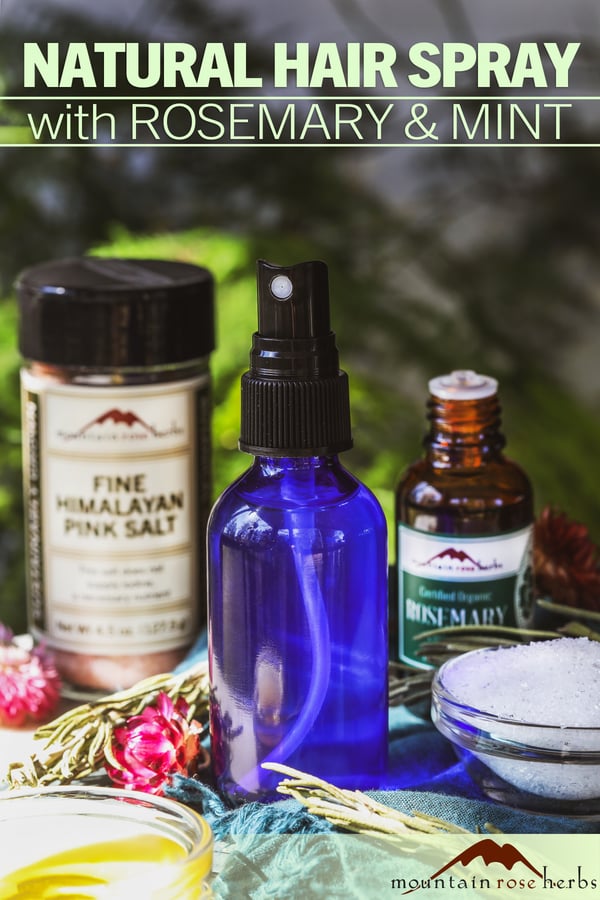I recently spent a night at a hotel with an outdoor saltwater soaking pool. I didn’t see much of the hotel itself because I could not convince my body that there was even one good reason to leave the buoyant 102°F saltwater paradise. I braided my hair ahead of time with the—in hindsight ridiculous—idea that maybe I could keep it dry, but by the time I finally conceded I needed to go to bed, it was thoroughly wet. So I toweled it dry-ish, ran a brush through it, and fell into bed for a deep, restful sleep. I woke up in the morning to voluminous hair that had fabulous waves. As I stood in front of the mirror blinking in confusion, it dawned on me that I had inadvertently given my hair a sea salt treatment… which reminded me that I could do this at home for significantly less money with DIY sea salt hair spray!
Because sea salt hair spray mimics seawater—working its way inside hair cuticles, absorbing moisture, reducing frizz, and enhancing natural waves—a DIY salt spray is an easy way to embrace the kind of beachy volume and texture you get after a dip in the ocean or a walk on a windswept Oregon beach with salt spray blowing through your hair.
Does Sea Salt Spray Damage Hair?
Homemade salt sprays are appropriate for most hair types. However, sea salt, whether in the ocean or a DIY formulation, can be too much of a good thing if you overuse it. Beachy hair is fantastic and fun, but without a hair-care plan that includes re-moisturizing your tresses, salt sprays will pull moisture from your hair and can leave it dry and brittle. This is where making a homemade salt spray has an advantage over actual seawater because you can opt to use gentler salts like Epsom salt and Himalayan pink salt, and you can add nourishing essential oils and organic hydrosols.
Tips on how to use a salt spray without damaging your hair:
- When using salt spray, give your hair a break sometimes. Use no more than twice a week, and don’t let it sit in your hair for more than a couple of days. Always condition well between uses.
- Never apply salt spray directly after washing with a clarifying shampoo. You want your hair damp but not soaking wet and your scalp and hair to have some natural oils. If applying after washing hair, use a conditioner or moisturizing serum, then brush through and let dry partway before spritzing with salt spray. If applying to unwashed hair, spray hair first with plain water to dampen it before using salt spray.
- If your hair is naturally dry, use salt spray only infrequently—keep the beachy look for special occasions. Also, be sure to wash out the salt spray as soon as possible and follow up with good deep conditioning.
- Salt sprays will give more waves or curls to naturally wavy hair, and you won’t have to use so much spray. If your hair is straight, you will need more salt spray to loosen your locks and allow you to style your hair into soft waves. Because you’ll be using more salt spray, you'll need to offer your hair some extra nourishment and moisturizer when you wash out the spray.
- Go gently when using heated styling tools. More heat means more damage to dry or brittle hair, even without the use of a hair spray.
How to maintain hair health when using sea salt spray:
- Apply an argan oil hair serum up to daily. A little goes a long way.
- Use a scalp and hair mask with castor and argan oils to nourish and strengthen hair. You can do this weekly.
- Eat a hair-healthy diet with good fats and high mineral content, and stay well hydrated.
Sea Salt Spray Recipe for Hair with Rosemary and Mint
Makes about 8 ounces.
Ingredients
- 2/3 cup hot water
- 2 Tbsp. Epsom salt
- 1/2 tsp. Himalayan pink salt
- 1/4 cup organic peppermint hydrosol
- 1 tsp. Non-GMO Project Verified aloe vera gel
- 10 drops organic rosemary essential oil
Directions
- Heat water until hot enough to dissolve salts.
- Pour water into a clean 8 oz. jar or bottle with an airtight lid.
- Add salts, cap the jar, and swirl to dissolve.
- Let sit until liquid is at room temperature, then add hydrosol, aloe vera gel, and essential oil. Swirl to mix.
- Store in a cool, dry place for up to 6 months.
- When ready to use, shake the jar to recombine ingredients, then pour part of the sea salt spray into a 1-2 oz. bottle with mister for ease of use.
To Use
- Shake thoroughly before each use to recombine ingredients.
- Spray on damp hair, using sparingly at the roots. Divide hair into sections if necessary to get good coverage. Start with less spray and apply more as needed. Remember, people with naturally wavy hair won’t need as much.
- For natural, breezy waves, scrunch hair in your hands and let air dry. Use your fingers to twist and scrunch hair as you blow-dry to get more volume and wave. Adding a diffuser to your hair dryer can help keep the heat gentle.
Want to know more natural ways to maintain beautiful, healthy hair?
Check out These Natural Scalp Treatments and Recipes!
You may also enjoy
- DIY Detangler and Anti-Frizz Spray Recipe
- Homemade Dry Shampoo Recipes for Dark & Light Hair
- How to Go "No Poo" with Herbal Hair Rinses














